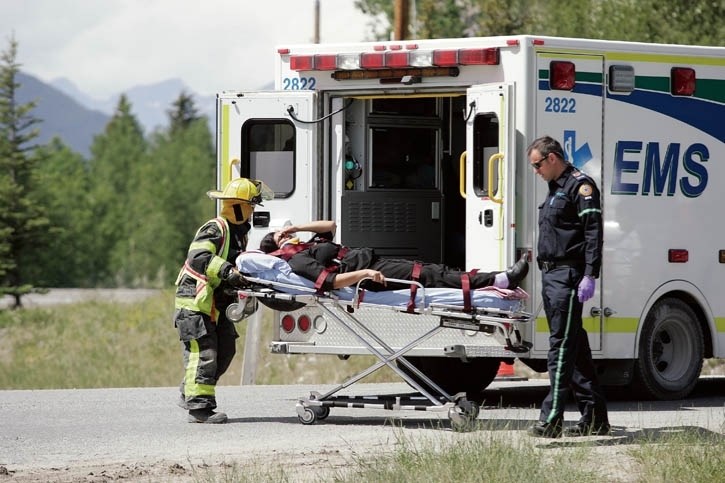Out of a pool of 25 newly hired EMS workers, Paul Kennedy, executive director of operations for EMS with Associated Ambulance, says the company is lucky if there are two or three people who are willing to take full-time contracts.
"Everybody else wants casual. And that's a big part of the issue in the industry now is nobody wants full-time work," he said.
Associated Ambulance is the second largest ambulance service in the province, and is a contracted provider for Alberta Health Services in 23, mostly rural, communities. Rural EMS has long had staffing challenges, but a generational shift in values is making it more difficult to fill schedules and keep ambulances ready to respond.
Whereas a casual position with an ambulance service used to be seen as a stepping stone to full-time work in the industry, with the benefits, pension, and stability that come with it, now it's "100 per cent flipped. Our casual pool is triple what it used to be trying to staff units. And there's lots of full time openings within the system," Kennedy said.
In a notoriously intense and high-stress industry, more paramedics are foregoing the perks of full-time work for the ability to set their own schedules as a casual employee and maintain a better work-life balance.
"It's kind of funny, that pendulum of work-life balance for so many years went all the way to work, and probably suffered. Now the pendulum seems to have gone the exact opposite way. And now, freedom and family time and off time are more important than the financial side of things," said James Habstritt, program director for Professional Medical Associates, a leading school for emergency medical training in Alberta.
Though attitudes towards the job have shifted, the number of people coming into the industry hasn't suffered, Habstritt said. From introductory level courses to the advanced care paramedic program, all of PMA's EMS programs have more applicants than available spaces, he said.
The additional stresses that came with being a front-line health worker during the COVID pandemic pushed many medics to drop the number of hours they work, or leave the industry entirely, said Mike Parker, president of the Health Sciences Association of Alberta. The ongoing crisis in Alberta emergency rooms, and emergency medical services, has created a situation where overtime hours are routinely tacked on to the end of a paramedics normal shift, "or the phone doesn't stop ringing because they need you to come back in" on days off," Parker said.
"And that's not healthy for anybody," he said. "It's just not safe anymore."
As more workers opt for casual shifts to protect themselves against stress injuries, the province-wide staffing problems only get worse. Parker said workers are doing the best they can, but the reality is that EMS isn't seen as having the career potential it once did.
Sonja Chamberlin, dean of the School of Health and Public Safety at SAIT, said students in their paramedic programs over the last few years have talked more about their concerns with finances and the need to work while studying and attending class.
"It's hard for for folks who are working full-time or part-time to give up their work to go back to school full-time into the [Advanced Care Paramedic] programs," Chamberlin said.
SAIT has responded by adopting some new delivery models where students complete more of the theory side of their courses online and only have to attend in-person for practical lessons and exams.
Kennedy said his company has tried several different incentives to attract more people into its workforce, such as paying the tuition of employees who return to school in exchange for return service agreements that keep them on staff after they graduate.
PMA is also working with Associated Ambulance to develop a new EMS training program that specifically targets people in rural areas who are interested in getting into the industry, and staying in their community, Habstritt said.
Even 10 years ago, people who graduated from a primary care paramedic program in Alberta would often have to spend time in rural stations to gain experience before getting hired in a bigger centre, he said. Now that is no longer a requirement, as AHS is in a position where they have to take people with less experience "and the draw is toward the big cities. And that causes the problem of getting people back into the rural centres."
By identifying people who are likely to succeed in EMS who already have roots in the towns and villages struggling to attract staff, Habstritt said they hope to create a stable pool of talent that isn't in competition with big cities, and one that works better for rural communities.




